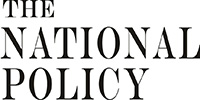
The illicit manufacture and trafficking of synthetic drugs from the Golden Triangle have grown exponentially, according to a report by the United Nations Office on Drugs and Crime (UNODC).
This explosive growth has led to record methamphetamine seizures in East and Southeast Asia, totaling 236 tons—a 24% increase compared to 2023, the report said.
The Philippines ranks 9th among 10 countries, with total seizures amounting to 2,250 kilograms.
‘‘The 236 tons represent only the amount seized; much more methamphetamine is actually reaching the market,’’ said Benedikt Hofmann, UNODC Acting Regional Representative for Southeast Asia and the Pacific. ‘‘While these seizures reflect, in part, successful law enforcement efforts, we are clearly seeing unprecedented levels of methamphetamine production and trafficking from the Golden Triangle, particularly in Shan State.’’ The report, titled “Synthetic Drugs in East and Southeast Asia: Latest Developments and Challenges,” showed that methamphetamine production and trafficking in Shan State, Myanmar, have significantly increased since 2021.
‘‘The ongoing crisis in Myanmar is increasing the demand for proceeds from the drug trade. At the same time, there is a degree of stability in certain parts of the country, especially those known for large-scale synthetic drug production,’’ Hofmann said. “This combination of conflict and stability has created favorable conditions for the expansion of drug production, impacting countries across the region and beyond.’’
Thailand remains the primary transit and destination point for methamphetamine trafficked from Myanmar and recorded the highest volume of seizures in the region, including one billion tablets of yaba—a combination of methamphetamine and caffeine widely used in Southeast Asia due to its availability and low cost. Meanwhile, transnational drug trafficking groups are increasingly exploiting emerging routes to evade law enforcement detection.
‘‘The trafficking route connecting Cambodia with Myanmar, primarily through Lao PDR, has been rapidly expanding,’’ said Inshik Sim, Lead Analyst at the UNODC Regional Office for Southeast Asia and the Pacific. ‘‘Another increasingly significant corridor involves maritime routes linking Malaysia, Indonesia, and the Philippines, with Sabah in Malaysia serving as a key transit hub.’’
The report highlighted the evolving tactics of transnational drug trafficking groups in East and Southeast Asia. These groups have shown remarkable adaptability in response to law enforcement pressures, as evidenced by the spread of production sites for ketamine and related precursor chemicals throughout most of the lower Mekong countries. Most recently, authorities in Viet Nam dismantled an industrial-scale facility in March 2025.
Another concerning trend is the rise in illicit manufacture of pharmaceutical products, particularly etomidate and its analogues, which are designed to bypass controls on new psychoactive substances.
The report also noted the growing use of technology across all aspects of the drug trade—from planning and coordination to trafficking operations and financial transactions, including money laundering.
‘‘With the surge in synthetic drug production and trafficking in the region, most countries report an overall increase in the use of methamphetamine and ketamine,’’ Hofmann said. ‘‘However, in some countries, we are seeing a decline in the number of younger drug users admitted to treatment facilities, which may reflect the success of drug prevention campaigns targeting youth,’’ he added.
‘‘It will be essential for the region to increase investment in both prevention and supply reduction strategies.’’
